
Inorganic and Nano-Metal Chemistry
Scope & Guideline
Catalyzing Discoveries in Inorganic and Nano-Metal Science.
Introduction
Aims and Scopes
- Synthesis of Coordination Polymers:
The journal extensively covers the synthesis of various coordination polymers, particularly those involving transition metals. These studies often explore novel ligands and complex architectures, contributing to the understanding of their structural diversity and potential applications. - Nanoparticle Synthesis and Characterization:
Research articles frequently report on the synthesis of nanoparticles using green chemistry approaches, emphasizing the use of plant extracts and biogenic methods. Characterization techniques such as X-ray diffraction, spectroscopy, and electron microscopy are commonly employed to understand the properties and functionalities of these nanoparticles. - Biomedical Applications:
Many studies focus on the biomedical applications of synthesized materials, particularly in cancer treatment, antibacterial properties, and drug delivery systems. This includes the exploration of metal complexes and nanoparticles as therapeutic agents. - Photocatalytic and Environmental Applications:
The journal highlights research on photocatalytic materials for environmental remediation, particularly in the degradation of dyes and pollutants. This includes the development of novel photocatalysts and the investigation of their effectiveness under various conditions. - Interdisciplinary Approaches:
Papers often integrate concepts from chemistry, materials science, and biology, indicating a trend towards interdisciplinary research. This includes the exploration of nanomaterials for energy storage, sensing applications, and as catalysts in organic transformations.
Trending and Emerging
- Green and Biogenic Synthesis:
There is a marked increase in the research focused on green synthesis methods, utilizing plant extracts and biological systems for the production of nanoparticles and coordination polymers, highlighting a shift towards environmentally friendly practices. - Nanomaterials for Biomedical Applications:
A growing trend is observed in the application of nanomaterials for biomedical purposes, including targeted drug delivery, anti-cancer therapies, and antimicrobial agents, reflecting the increasing importance of nanotechnology in medicine. - Photocatalytic Materials for Environmental Remediation:
Research on photocatalytic materials, particularly those involving metal oxides and nanocomposites for the degradation of pollutants, is on the rise, emphasizing the need for sustainable solutions to environmental challenges. - Hybrid Organic-Inorganic Nanostructures:
There is a notable increase in the investigation of hybrid materials that combine organic and inorganic components, which are explored for their unique properties and applications in sensing, catalysis, and drug delivery. - Multifunctional Nanocomposites:
Emerging studies are focusing on multifunctional nanocomposites that exhibit multiple properties, such as catalytic activity, photoluminescence, and antibacterial effects, which are essential for advanced applications across various fields.
Declining or Waning
- Traditional Chemical Synthesis Methods:
There seems to be a declining interest in traditional chemical synthesis methods for inorganic compounds, as more researchers lean towards greener, biogenic approaches that utilize natural resources. - Focus on Heavy Metals in Coordination Chemistry:
Research focusing on heavy metal coordination compounds has decreased, possibly due to increased regulatory scrutiny and a shift towards safer, earth-abundant metals in coordination chemistry. - Limited Exploration of Inorganic Solid-State Chemistry:
The exploration of inorganic solid-state chemistry, particularly in terms of bulk materials and their properties, appears to be waning in favor of more dynamic and application-oriented research in nanoscale materials. - Conventional Drug Delivery Systems:
There is a noticeable reduction in studies centered around traditional drug delivery systems, as the field moves towards more innovative and efficient nanoparticle-based delivery mechanisms that enhance bioavailability and targeting. - Studies on Inorganic Photonic Materials:
Research on inorganic photonic materials, while still relevant, has become less prominent within the journal, as the focus shifts towards multifunctional nanomaterials with integrated properties.
Similar Journals

ACS Macro Letters
Pioneering Insights in Inorganic and Materials ChemistryACS Macro Letters, published by the American Chemical Society, is a leading journal in the fields of Inorganic Chemistry, Materials Chemistry, Organic Chemistry, and Polymers and Plastics. Established in 2012, this journal has swiftly ascended to the forefront of chemical research with an impressive reputation, as evidenced by its 2023 Scopus rankings placing it in the first quartile across multiple categories. The journal's objective is to disseminate timely and concise articles that advance the study of macromolecules and their applications, making it an essential resource for researchers, professionals, and students alike. With a focus on fostering innovation and facilitating collaboration within the chemical community, ACS Macro Letters presents a robust platform for scientists to share their groundbreaking findings. Being based in the United States, it serves as a central hub for global discourse in the chemical sciences, although it does not currently offer Open Access options. The journal's commitment to high-quality content is further underscored by its prestigious impact factor and acceptance into elite academic quartiles, signifying its influence and importance in shaping future research.
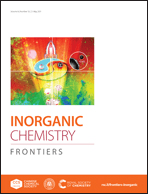
Inorganic Chemistry Frontiers
Elevating Inorganic Chemistry to New HeightsInorganic Chemistry Frontiers, published by the esteemed Royal Society of Chemistry, stands at the forefront of advancements in the field of inorganic chemistry, boasting a prestigious Q1 ranking in its category as of 2023 and an impressive Scopus Rank of #3 out of 79, placing it in the 96th percentile. Since its inception in 2014, this journal has provided a robust platform for high-quality research that spans the diverse and rapidly evolving areas of inorganic chemistry. As an open-access journal, it ensures that the findings presented are readily accessible to researchers, educators, and practitioners globally, fostering an inclusive environment for the dissemination of knowledge. With its rigorous peer-review process, Inorganic Chemistry Frontiers aims to facilitate interdisciplinary dialogue and innovation, making it an essential resource for anyone dedicated to exploring the myriad applications and theoretical advancements within inorganic chemistry.
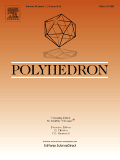
POLYHEDRON
Innovating Research in Inorganic and Theoretical Chemistry.POLYHEDRON is a prestigious academic journal published by Pergamon-Elsevier Science Ltd, specializing in the fields of Inorganic Chemistry, Materials Chemistry, and Physical and Theoretical Chemistry. With its ISSN 0277-5387 and E-ISSN 1873-3719, the journal has been a significant outlet for groundbreaking research since its inception in 1982 and continues to be influential for scholars and practitioners. As of 2023, it holds a Q3 quartile ranking across its categorization, underscoring its impact within the scientific community with respectable Scopus Rankings that place it in the top percentiles of relevant fields. Situated in the United Kingdom, POLYHEDRON aims to foster the exchange of innovative ideas and findings related to polyhedral molecules and structures, making it an essential resource for researchers seeking to expand their knowledge and contribute to these dynamic areas of study. While currently not an Open Access journal, it remains committed to advancing education and research by providing quality content that serves both academic and practical applications.

Crystals
Bridging Theory and Application in Materials ScienceCrystals is a premier open-access journal, published by MDPI since 2011, that focuses on the multidisciplinary fields of chemical engineering, condensed matter physics, inorganic chemistry, and materials science. With its E-ISSN 2073-4352, the journal is headquartered in Switzerland, and actively contributes to the global scientific community by facilitating the dissemination of high-quality research. Ranking in the Q2 quartile across multiple categories, including Chemical Engineering (miscellaneous) and Materials Science (miscellaneous) for 2023, Crystals provides a platform for innovative studies that span from fundamental research to practical applications. The journal's commitment to open access ensures that groundbreaking findings are readily available to researchers, professionals, and students alike, fostering an environment of collaboration and knowledge sharing that is essential in advancing the scientific understanding of crystalline materials.
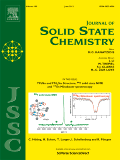
JOURNAL OF SOLID STATE CHEMISTRY
Driving Excellence in Solid State InvestigationsWelcome to the Journal of Solid State Chemistry, a prestigious publication that has been at the forefront of solid state chemistry research since its inception in 1969. Published by Academic Press Inc. Elsevier Science in the United States, this journal offers a rigorous platform for the dissemination of high-impact research articles and reviews in a wide array of categories such as Ceramics and Composites, Condensed Matter Physics, and Materials Chemistry, among others. With an impressive Q2 ranking across multiple categories in 2023 and a commendable performance in Scopus rankings—including a top position in Inorganic Chemistry—this journal serves as an essential resource for researchers, professionals, and students eager to advance their understanding in solid state phenomena. Although it does not currently offer Open Access options, the breadth and quality of the published research ensure significant visibility and scholarly impact. As we continue to converge into 2024, we invite you to explore groundbreaking studies that push the boundaries of knowledge in solid state chemistry.

JOURNAL OF STRUCTURAL CHEMISTRY
Illuminating the Path of Chemical Discovery Since 1960The JOURNAL OF STRUCTURAL CHEMISTRY, published by PLEIADES PUBLISHING INC, is a premier resource in the fields of Inorganic Chemistry, Materials Chemistry, and Physical and Theoretical Chemistry. Established in 1960, this journal has been providing a platform for groundbreaking research, facilitating the advancement of knowledge and innovation up to the year 2024. With an ISSN of 0022-4766 and an E-ISSN of 1573-8779, this journal strives to maintain high academic standards, as evidenced by its quartile rankings in 2023, where it ranks Q4 across various chemistry categories. While it currently does not offer open access, the journal's insightful articles are crucial for professionals and students seeking to enhance their understanding and expertise in structural chemistry. Subscribers can expect a comprehensive collection of peer-reviewed research, empirical findings, and theoretical discussions that contribute significantly to the scientific community. With its strong historical foundation and ongoing commitment to quality, the JOURNAL OF STRUCTURAL CHEMISTRY continues to be an essential resource for those passionate about the complexities of structural chemistry.
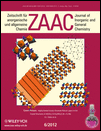
ZEITSCHRIFT FUR ANORGANISCHE UND ALLGEMEINE CHEMIE
Exploring the Depths of Inorganic ChemistryZEITSCHRIFT FUR ANORGANISCHE UND ALLGEMEINE CHEMIE, published by WILEY-V C H VERLAG GMBH, is a pivotal journal in the field of inorganic chemistry, catering to the needs of researchers, professionals, and students seeking to advance their understanding of this dynamic discipline. With its historical roots dating back to 1892 and a commitment to high-quality research, this journal provides a platform for the dissemination of significant findings related to inorganic substances and their general chemistry. Although currently not an open-access journal, it holds a competitive position with an impact factor placing it in the Q3 quartile of the Inorganic Chemistry category, ranking #57 out of 79 in Scopus. Situated in Germany, this journal not only connects past and present research endeavors but also aims to foster innovation and collaboration within the inorganic chemistry community. Whether you are exploring fundamental concepts or groundbreaking applications, ZEITSCHRIFT FUR ANORGANISCHE UND ALLGEMEINE CHEMIE remains an invaluable resource for advancing chemical sciences.
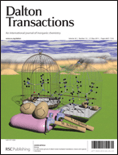
DALTON TRANSACTIONS
Pioneering Research in Inorganic ScienceDALTON TRANSACTIONS, published by the esteemed Royal Society of Chemistry, is a premier journal in the field of Inorganic Chemistry, recognized for its significant contributions to advancing research and scholarship since its inception in 2002. With an impressive Impact Factor and ranked in the Q1 category, it holds a notable position at Rank #21 out of 79 within its Scopus category, highlighting its reputation for excellence and influence in the scientific community. This journal provides a platform for disseminating high-quality research, reviews, and communications related to all aspects of inorganic chemistry, fostering collaboration and innovation among researchers, professionals, and students alike. Although it does not offer open access, its robust selection process and commitment to scholarly integrity ensure that published works are of the highest standard. For those passionate about inorganic chemistry, DALTON TRANSACTIONS serves as an essential resource, fostering a deeper understanding of the field and its applications.

CHINESE JOURNAL OF INORGANIC CHEMISTRY
Advancing the Frontiers of Inorganic ChemistryThe CHINESE JOURNAL OF INORGANIC CHEMISTRY, published by the esteemed CHINESE CHEMICAL SOC, stands as a pivotal resource for researchers and professionals in the field of inorganic chemistry. With an ISSN of 1001-4861, this journal has been disseminating cutting-edge research since its establishment in 1996 and continues to influence the scientific community with its commitment to high-quality publications. Although currently classified in the Q4 quartile for Inorganic Chemistry and ranked 70th out of 79 in its category according to Scopus, the journal serves as a platform for innovative studies that push the boundaries of inorganic materials and compounds. While it operates on a traditional access model, the journal is dedicated to fostering scientific discourse and collaboration among scholars in China and beyond, making it an essential reference for anyone involved in inorganic chemistry research.

JOURNAL OF INORGANIC BIOCHEMISTRY
Fostering Innovation in Inorganic Biochemistry ResearchJOURNAL OF INORGANIC BIOCHEMISTRY, published by Elsevier Science Inc, is a pivotal journal dedicated to exploring the intricate intersections of biochemistry and inorganic chemistry. With an ISSN of 0162-0134 and an E-ISSN of 1873-3344, this esteemed journal has been a key resource since its inception in 1979, converging its insights through impactful research projections until 2024. Currently ranked #18 out of 79 in Inorganic Chemistry, placing it in the 77th percentile, and #144 out of 438 in Biochemistry, at the 67th percentile, the journal showcases a diverse array of studies that contribute significantly to understanding the roles of inorganic compounds in biological systems. Although it does not offer open access, the journal remains integral in fostering rigorous academic discourse among researchers and professionals keen on advancing the field. With a Category Quartile ranking of Q3 in Biochemistry and Q2 in Inorganic Chemistry, it serves as a critical platform for scholars aiming to disseminate cutting-edge findings and stimulate scholarly engagement in this dynamic area of study.